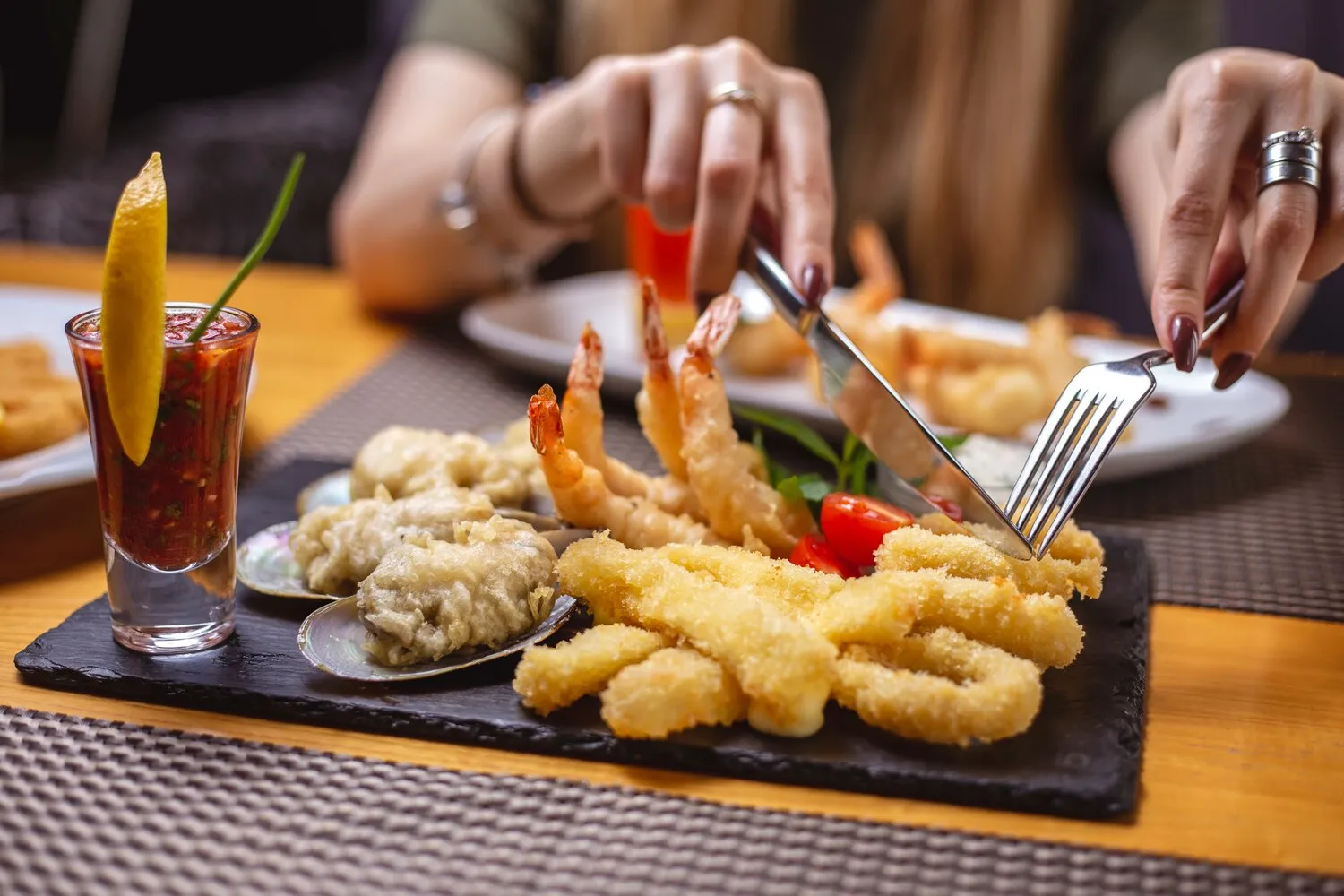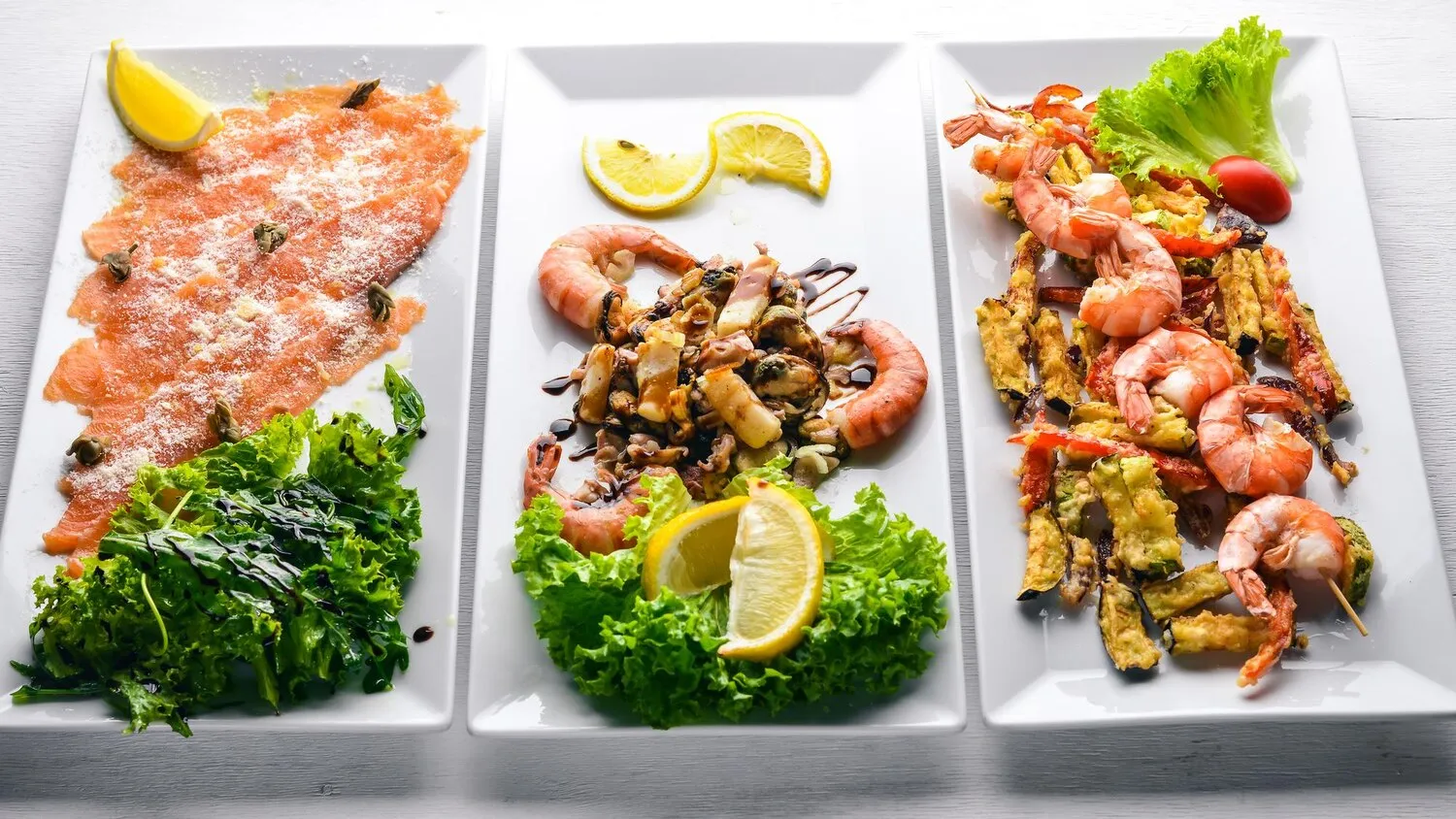
Mariscada
A generous seafood platter featuring a variety of fresh shellfish, likely including crab, lobster, shrimp, clams, and mussels. Often served with bread for dipping in the flavorful broth.
Nutrition Facts
* The % Daily Value (DV) tells you how much a nutrient in a serving of food contributes to a daily diet. 2,000 calories a day is used for general nutrition advice.
Seafood stews and platters have been a part of Iberian cuisine for centuries, reflecting the region's long coastline and rich maritime traditions. Mariscada likely evolved from simpler seafood stews enjoyed by coastal communities, gradually becoming more elaborate and incorporating a wider variety of shellfish as trade and culinary techniques advanced. It reflects both peasant fare of using what you can find along the coast and celebratory dishes where abundance and variety were prioritized.
Mariscada is more than just a meal; it's a celebration of the sea and a symbol of communal dining, often enjoyed on special occasions or gatherings with family and friends.
Communal Dining
Mariscada is typically served in a large pot or platter at the center of the table, encouraging diners to share and enjoy the meal together. This fosters a sense of camaraderie and shared experience.
Celebratory Dish
Often prepared for special occasions like birthdays, holidays, or anniversaries, Mariscada represents abundance and prosperity. The inclusion of expensive ingredients like lobster signifies a festive and celebratory atmosphere.
Regional Variations
While the core concept remains the same, Mariscada varies regionally within Portugal and Spain. Different coastal areas may incorporate local seafood varieties and regional spices, reflecting the unique culinary traditions of each region.
Mariscada offers a symphony of oceanic flavors, where the sweetness of shellfish mingles with the savory notes of the broth, often enhanced by aromatic vegetables and herbs.
The dominant flavors are derived from the shellfish itself: the briny sweetness of shrimp, the delicate meatiness of crab, the rich lobster, and the subtly flavored clams and mussels. The broth, typically tomato-based and infused with garlic, onions, peppers, and herbs like parsley or cilantro, adds depth and complexity. A touch of spice from chili peppers or pimentón can provide a pleasant warmth, while a squeeze of lemon or a splash of white wine brightens the overall taste profile. The bread served alongside is crucial for soaking up the flavorful broth.
Freshness is Key
The quality of the seafood is paramount. Ensure all shellfish are fresh and sourced from reputable suppliers. Live shellfish are preferable.
Broth Balance
Pay attention to the broth's flavor. Taste and adjust seasonings accordingly. The broth should complement, not overpower, the seafood's natural flavors.
Don't Overcook
Overcooking shellfish leads to a rubbery texture. Add the most delicate seafood (like shrimp) towards the end of cooking to prevent it from becoming tough.
Serve with Crusty Bread
Crusty bread is essential for soaking up the delicious broth. Choose a bread with a hearty crust that can withstand dipping without falling apart.
Explore additional Seafood platter dishes and restaurants
Explore Seafood platterDiscover top dining spots and culinary experiences in Vila Franca de Xira.
Explore Vila Franca de XiraLearn more about the food culture, restaurant scene, and culinary heritage of Portugal.
Explore Portugal
